About
About
Our Mission
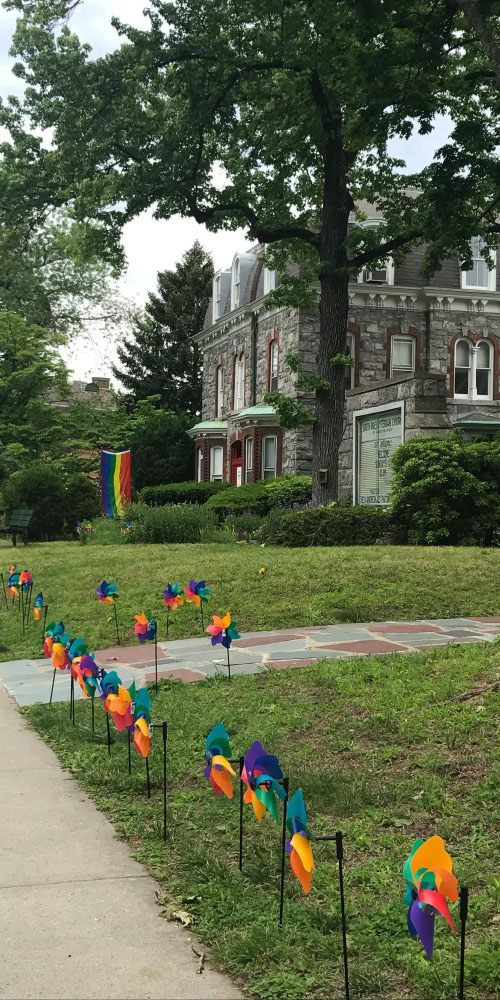 Aiding one another in the work of becoming more fully human, in the ways that God has given us, through:
Aiding one another in the work of becoming more fully human, in the ways that God has given us, through:
Constant Learning: Learning about the many paths to spiritual wisdom and fully-human living. We look to scripture, the model of Jesus, and other traditions for guidance.
Justice Work: Discovering the stories of Jesus and peacemakers like Gandhi, Chavez, Mandela, and King. We work together to live these stories as we care for God’s creation.
The Arts: Celebrating the language of the musician, the poet, the painter, the storyteller and the dancer. We nurture these magical voices that help us plumb the depths of our interior life and external realities.
Inclusion: Striving to follow the radical hospitality of Jesus. Gay, straight, child, elder, believer, non-believer, rich, poor, strong, wounded, all genders, all races, all people are utterly welcome in our work and worship together.
Our Vision
The church is far more than a building to us. It’s who we are in the world. At South Church we are being gathered in to be sent out: stepping into a living tradition that spans generations and connects us to larger purpose; opening our hearts to the startling innovations of the Spirit; cherishing diversity and amplifying the voices others have sought to silence – using ritual, prayer, music and the arts to experience God in new and deeper ways; working as a team to make our congregation fertile ground for deep listening and honest telling, transformative lament and grounding gratitude, playful participation and bold experimentation, quiet contemplation and courageous action.
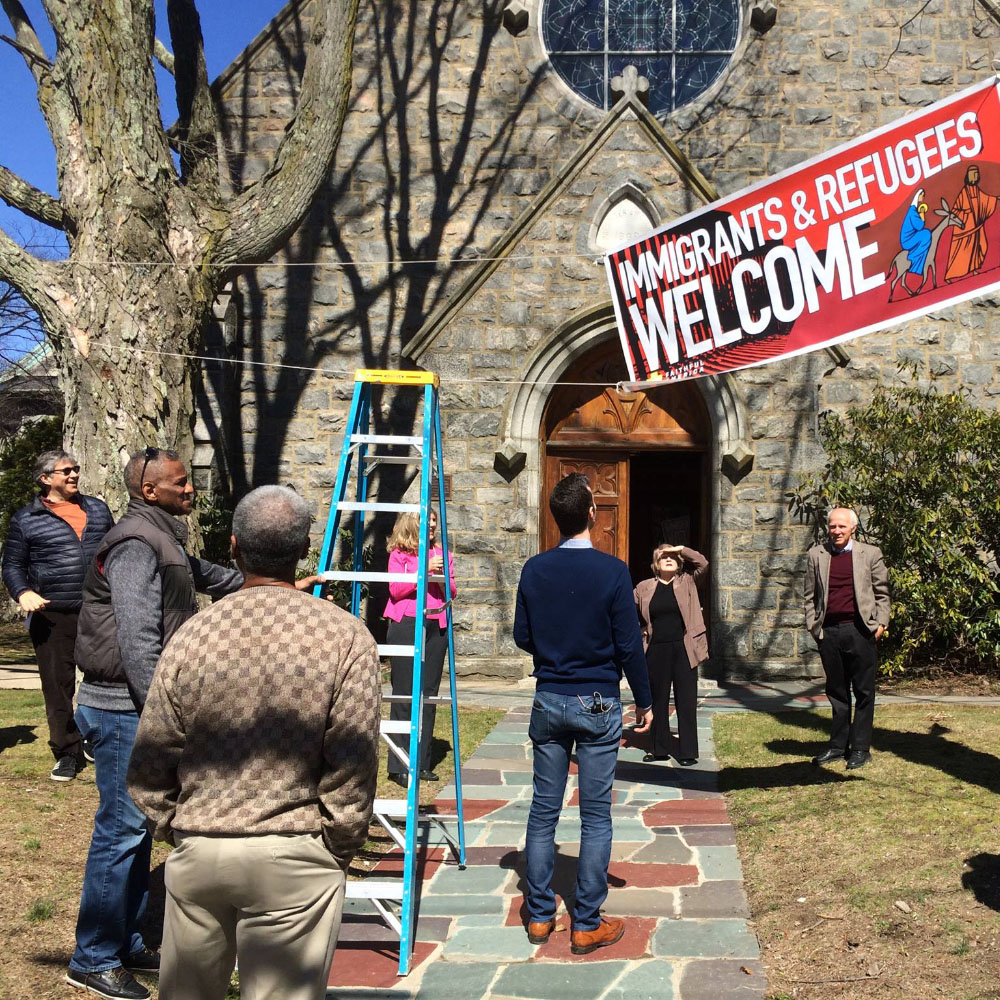 At South Church we believe that God is shaping and reshaping us into an intergenerational, multiracial, multicultural community, with a vision and vocation based not in the dominant culture of fear, oppression and scarcity, but in God’s abundance and special concern for historically victimized peoples, and in the struggle for mutual liberation.
At South Church we believe that God is shaping and reshaping us into an intergenerational, multiracial, multicultural community, with a vision and vocation based not in the dominant culture of fear, oppression and scarcity, but in God’s abundance and special concern for historically victimized peoples, and in the struggle for mutual liberation.
We seek to be more than inclusive – not only inviting others to participate in what we are doing; but joining with others in the good that they are doing, willing to be challenged and transformed by God, through encounters and experiences beyond the bounds of our comfort zones.
We are striving daily, in ways great and small, to walk the way of Jesus and to embody the Beloved Community – empowering one another to take on responsibility and unleash untapped gifts; abiding with one another through thick and thin; facing conflict head-on and seeking the peace that waits on the far side of justice; standing in solidarity with the impoverished, the broken-hearted, and the oppressed; speaking truth to power in love; working to realize, in the here and now, God’s Cosmic Reign of Hope and Justice.
Our Story
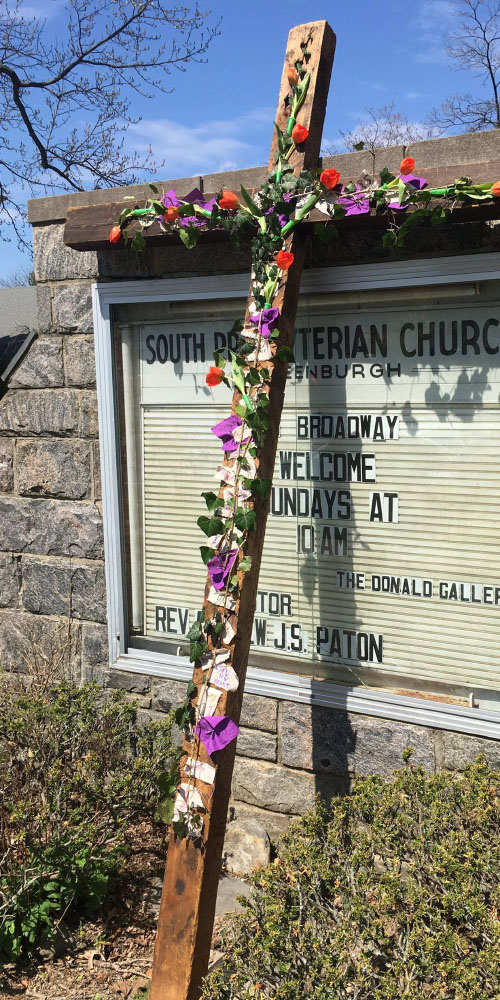 From its inception in 1823 to the present day, South Presbyterian Church has faced controversy head-on with love and has tackled the issues of the day with foresight and courage. The congregation was active in the abolitionist movement in the age of slavery and in the Civil Rights Movement during Jim Crow Segregation. We protested the War in Vietnam and organized against housing discrimination in the Village of Dobbs Ferry.
From its inception in 1823 to the present day, South Presbyterian Church has faced controversy head-on with love and has tackled the issues of the day with foresight and courage. The congregation was active in the abolitionist movement in the age of slavery and in the Civil Rights Movement during Jim Crow Segregation. We protested the War in Vietnam and organized against housing discrimination in the Village of Dobbs Ferry.
In more recent history, the church devoted itself to advocating with New Yorkers experiencing homelessness – creating Midnight Run in 1984. That same year, the church began a long and storied journey as an outspoken proponent of LGBTQ rights, and an early leader in the More Light movement. In the age of Black Lives Matter, Standing Rock and Occupy Wall Street, mass incarceration and mass deportation, anti-trans legislation and climate science denial, we find ourselves wrestling with new questions and callings. As we open ourselves to the prophetic stirrings of this time, our heritage continues to shape and ground our life and work together.
History
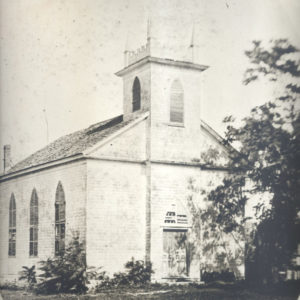 In 1820 Dobbs Ferry consisted of a small number of farmhouses on one of two main roads; The Albany Post Road (now Broadway) and Ashford Avenue, the original Indian path leading east from the Hudson River. The most conspicuous landmark was the mansion of Peter Van Brugh Livingston at the Southern end of town. There were no churches in Dobbs Ferry, so for several years a small group of inhabitants met in the barn belonging to Mr. Livingston, led by a travelling preacher who was either Presbyterian or Methodist. In 1823, this little congregation wishing to register its permanence incorporated as the South Presbyterian Church in Greenburgh to distinguish itself from the North Presbyterian Church in Halls Corners.
In 1820 Dobbs Ferry consisted of a small number of farmhouses on one of two main roads; The Albany Post Road (now Broadway) and Ashford Avenue, the original Indian path leading east from the Hudson River. The most conspicuous landmark was the mansion of Peter Van Brugh Livingston at the Southern end of town. There were no churches in Dobbs Ferry, so for several years a small group of inhabitants met in the barn belonging to Mr. Livingston, led by a travelling preacher who was either Presbyterian or Methodist. In 1823, this little congregation wishing to register its permanence incorporated as the South Presbyterian Church in Greenburgh to distinguish itself from the North Presbyterian Church in Halls Corners.
In August 1823, six members of this group bought one acre triangular piece of land next to the free burial ground on the corner of Storm Street and Ashford Road. They paid Martin Lefurgy and “Rebeccah his Wife” thirty five dollars for it. With that commitment, the first house of worship was erected in Dobbs Ferry. Building of the little church was done mostly by personal labor. Made from timbers hewn out of trees cut in the swampland by the Saw Mill River, with a roof and walls covered with hand-split shingles and painted white in the manner of New England churches, the church became known as the Little White Church. Although the building no longer stands, the Little White Cemetery is there, still owned by the church. The Lutheran Church now occupies that property beside the cemetery.
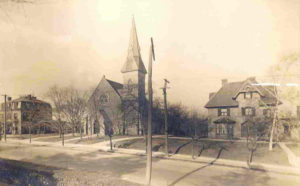
For two years, the church was Presbyterian in name only, but in 1825 the church was received by the Presbytery of New York, and was officially organized in April of that year. In 1831 a disagreement shook the church when Van Brugh Livingston who militantly opposed liquor, convinced some of the congregation to pass a resolution that anyone wishing to join the church must sign a pledge of total abstinence from distilled spirits. A difference of opinion developed over this issue, which was censured by the Presbytery, and eventually led to Livingston’s resignation as elder.
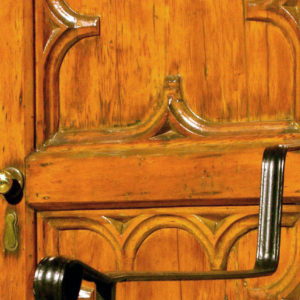 For nearly 40 years, the little white church served the needs of the congregation, which now had about 140 members. As Dobbs Ferry began to grow, a plan for a new building closer to the center of the village was proposed in 1864. James Wilde, Jr., a member of the congregation, negotiated the purchase of the land and acquired the adjoining piece of property to the west for his own use. Plans for the church were drawn up by Julius Munckowitz, who later became Supervising Architect of the New York City Department of Public Parks. Building of this new church on the hill became a matter of tremendous local importance. The granite was cut at the quarry said to be on Ashford Avenue, belonging to congregation member George Schmidt. Calder and Banta of Irvington did the carpentry and James Gaisford, the masonry. Workmen from Dobbs Ferry and all the surrounding villages were called to the job. Church members helped by contributing either money or their labor to the effort. The new church had all the modern conveniences of the day, including gaslights. The cornerstone for the new building was laid on June 8, 1868, in the presence of a large crowd including Rev. Thornton M. Niven, the new pastor. On the last Sunday of 1869 the new building, our present building, was dedicated and the congregation left the old white church never to return. Construction on the Manse to the east of the church, was started in 1869. When it was finished the following year, Rev. Niven and his wife moved in. During the 1870’s James Wilde, Jr. built himself a retirement home on the corner of Broadway and Oak street next to the church. Upon it’s completion, he decided not to occupy it, but instead turned it over to the Misses Masters who had come to Dobbs Ferry to open a school. In 1916 the church acquired Wilde House, which now houses Days of Wonder Day Care.
For nearly 40 years, the little white church served the needs of the congregation, which now had about 140 members. As Dobbs Ferry began to grow, a plan for a new building closer to the center of the village was proposed in 1864. James Wilde, Jr., a member of the congregation, negotiated the purchase of the land and acquired the adjoining piece of property to the west for his own use. Plans for the church were drawn up by Julius Munckowitz, who later became Supervising Architect of the New York City Department of Public Parks. Building of this new church on the hill became a matter of tremendous local importance. The granite was cut at the quarry said to be on Ashford Avenue, belonging to congregation member George Schmidt. Calder and Banta of Irvington did the carpentry and James Gaisford, the masonry. Workmen from Dobbs Ferry and all the surrounding villages were called to the job. Church members helped by contributing either money or their labor to the effort. The new church had all the modern conveniences of the day, including gaslights. The cornerstone for the new building was laid on June 8, 1868, in the presence of a large crowd including Rev. Thornton M. Niven, the new pastor. On the last Sunday of 1869 the new building, our present building, was dedicated and the congregation left the old white church never to return. Construction on the Manse to the east of the church, was started in 1869. When it was finished the following year, Rev. Niven and his wife moved in. During the 1870’s James Wilde, Jr. built himself a retirement home on the corner of Broadway and Oak street next to the church. Upon it’s completion, he decided not to occupy it, but instead turned it over to the Misses Masters who had come to Dobbs Ferry to open a school. In 1916 the church acquired Wilde House, which now houses Days of Wonder Day Care.
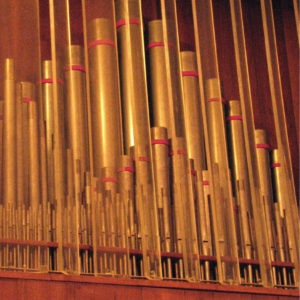 In 1916 when John M. Trout was minister, electric fixtures replaced the gaslights, and new stained glass memorial windows were put in place. The windows were designed and made by J. Gordon Guthrie, a member of the church who for several years worked for Louis Comfort Tiffany. Mr. Gutherie used Emma Losee, Jean Judson and Ethel Wilde, members of the congregation as models for the rose window.
In 1916 when John M. Trout was minister, electric fixtures replaced the gaslights, and new stained glass memorial windows were put in place. The windows were designed and made by J. Gordon Guthrie, a member of the church who for several years worked for Louis Comfort Tiffany. Mr. Gutherie used Emma Losee, Jean Judson and Ethel Wilde, members of the congregation as models for the rose window.
In 1928, the original hand-pumped organ started wheezing. A committee headed by Sarah Masters and the organist, Frederick Carter, established a fund raising goal of $10,000 for a new organ. In the first month, they raised $16,000. With this money, the balcony was rebuilt and our beloved organ was installed in 1928. Originally built in 1898 and formerly installed in Central Presbyterian Church in Manhattan, it is the organ, which today contributes to the vitality of our worship services here at South Church. Click here for more information concerning the South Church pipe organ. The church bell we ring is dated 1876, made by a major bell founder in this country, Meneely & Kimberly of Troy, New York.
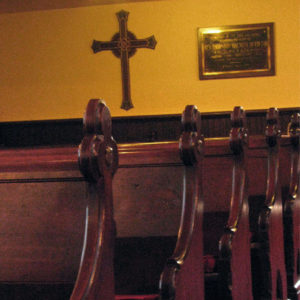 Construction of the church building has been an on-going project. Stained glass windows were added in the nave and vestibule, as memorials to members of the congregation in 1964. They were designed by J.M. Baransky in Yonkers.
Construction of the church building has been an on-going project. Stained glass windows were added in the nave and vestibule, as memorials to members of the congregation in 1964. They were designed by J.M. Baransky in Yonkers.
From the very beginning when a small group of people decided to begin this church, they never sidestepped controversy, hard work or social justice. From Van Brugh Livingston’s stance on no liquor (though medicinal use was accepted), to money to help Civil War reconstruction in the South and for “freedmen”, up to the present on the streets of New York with the homeless poor, to Nicaragua and Malawi, to our commitment to sexual justice, our historical roots continue to guide us.
—Jacque Jennett
Our Identity
South Presbyterian Church has been a vital part of the village of Dobbs Ferry and the Rivertowns community for nearly 200 years. Building on a rich history of faith-inspired social justice ministries and a longstanding commitment to making music, art, and drama an integral part of communal, spiritual life; we envision the church as a force for social change and we strive daily, with God’s help, to make that vision real in our community and beyond.
We are families, singles, parents, kids, young professionals and retirees. We are artists, actors, activists, contractors, chefs, bankers, teachers, authors, journalists, musicians, social workers, lawyers, plumbers, and poets. We are queer, and immigrant, and many races.
We come from widely disparate religious (and non-religious) backgrounds. Some of us are lifelong Jesus followers, others self-identify as Jewish or secular humanist. Still others are multi-belonging – drawing meaning and purpose from a range of spiritual traditions. We are “nones” and “dones” and “spiritual but not religious” types – wounded by past experiences with organized religion or completely new to church.
We are diverse in many, many ways – including in what we believe – and we celebrate that richness.
We are also unified – by curiosity about the way of Jesus, by our deepest held values and by our shared work; and we have found, in this Presbyterian church, an authentic, theologically expansive community that fosters meaningful spiritual experience and ignites lives of purpose.
We are just crazy enough to believe that we can make this world a better, kinder, more just, more whole and more connected place – this we believe, is our sacred calling; but the work, we know, begins with being human. We know we need to be rooted in community and spiritual practice. And so, we have agreed to be on this journey together and to see where it leads.
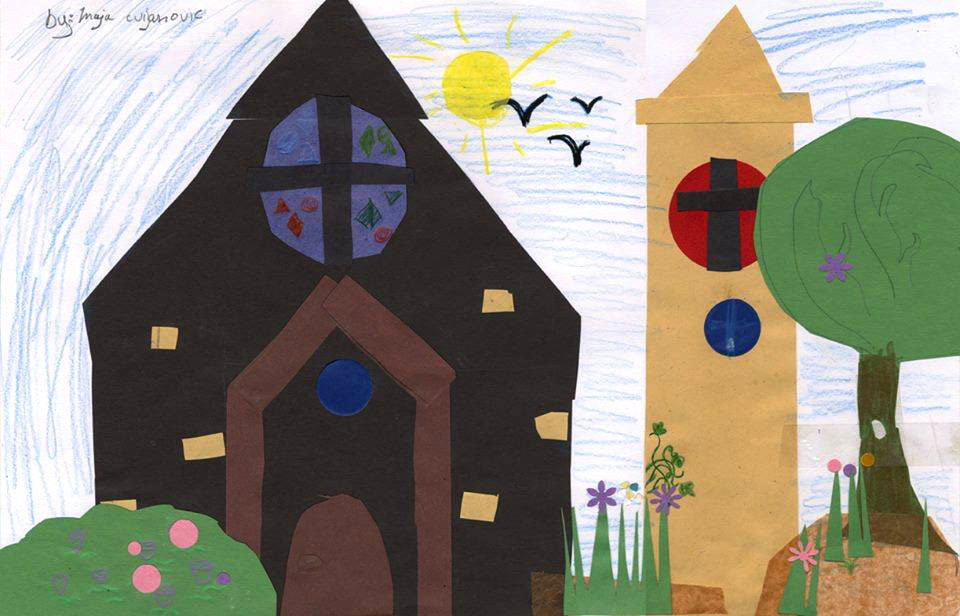
The Cross
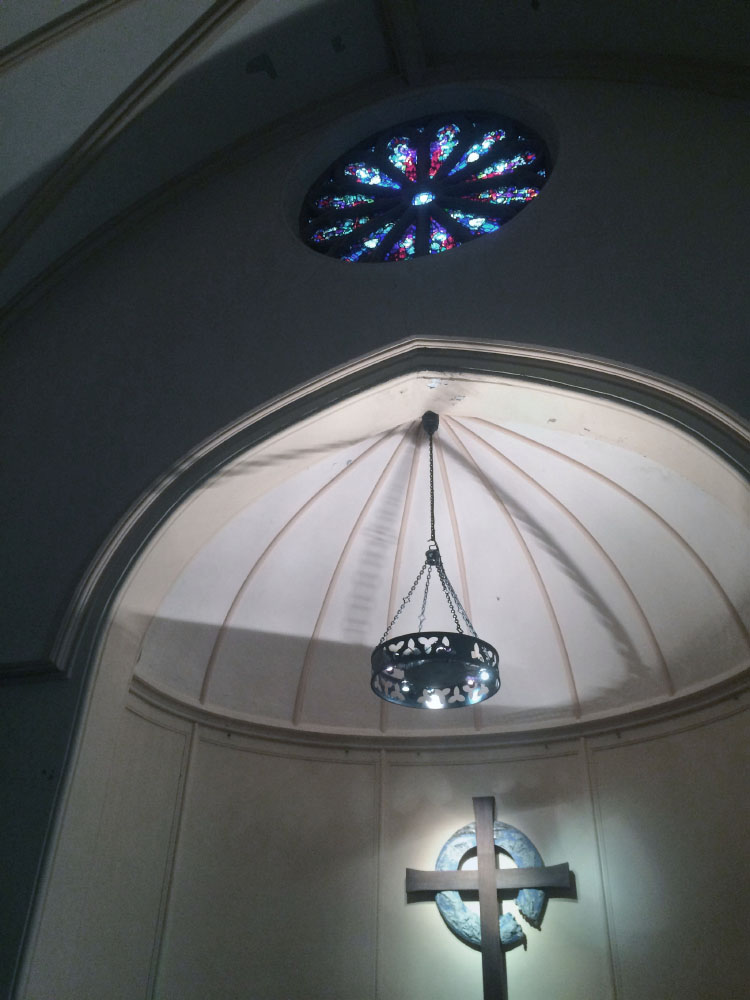 The cross which hangs on the wall at the head of our sanctuary is a vivid symbol of the life at South Church. It honors the traditions and it loves an earth spun out of the heart and hands of God. This bears the marks of our fingers imprinted one Sunday morning and in one smooth quadrant, waits for the touch of others to come. The break in the circle grieves all that wounds our humanity, our history, our destiny. The arms of the cross are bent inward ever so slightly, extending a sacred hospitality. In its totality, it is another language for an invincible hope. Night and day it whispers: “Welcome all of you. Welcome here. Welcome always.”
The cross which hangs on the wall at the head of our sanctuary is a vivid symbol of the life at South Church. It honors the traditions and it loves an earth spun out of the heart and hands of God. This bears the marks of our fingers imprinted one Sunday morning and in one smooth quadrant, waits for the touch of others to come. The break in the circle grieves all that wounds our humanity, our history, our destiny. The arms of the cross are bent inward ever so slightly, extending a sacred hospitality. In its totality, it is another language for an invincible hope. Night and day it whispers: “Welcome all of you. Welcome here. Welcome always.”
The wooden cross was created by Rob Spinazzola, the ceramic circle by Ray Boswell. This remarkable piece of work was dedicated on Sunday, October 27, 1996.

